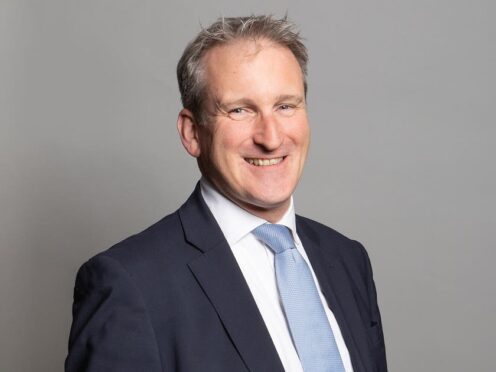
Getting a mobile phone between primary and secondary school has become a “rite of passage” for nearly all children, the schools minister has said.
Damian Hinds said some children were given smartphones “quite a lot earlier” than Year 6 and said he welcomed the debate on primary school pupils’ accessing devices.
But he told the Education Select Committee that the Government did not tell parents when it was the right time to buy smartphones for their children.
His comments came after schools in England were given guidance from the Government intended to stop the use of mobile phones during school hours.
Mr Hinds told MPs: “Almost close to everybody gets a mobile phone now at least between Year 6 and Year 7.”
He added: “There seems to be something of a rite of passage about that. You’re also right, some children will get a phone or a smartphone quite a lot earlier.
“The Government doesn’t tell parents when is the appropriate time to do that. These are decisions for families, they are decisions for parents in bringing up their children.
“But just to be clear, I do welcome the debate around this. I think having it in the public sphere – having commentators, journalists, academics, and politicians talking about it – I think is helpful.”
Last month, the Department for Education (DfE) published guidance, which is non-statutory, which instructed headteachers on how to ban the use of phones, not only during lessons, but during break and lunch periods as well.
When asked whether the Government would consider making a mobile ban in schools “statutory”, Mr Hinds told MPs: “We want to create this new norm and I think actually pretty much everybody welcomes there being that norm.
“And so I’m not anticipating there being a problem implementing this, but if there were, you’re quite right, that option remains to make (it) statutory.”
Officials from Ofcom, the media regulator, also gave evidence to MPs on the committee as part of its inquiry into screen time and its impact on children.
When asked whether stricter age verification measures should be introduced on social media, Mark Bunting, director of online safety strategy delivery at Ofcom, said social media companies’ lower age limits “tend to be 13”.
But he said: “There are a lot of under-13s who are using services, whether it’s social media or messaging services, I think that is a concern.
“Our immediate priority will be trying to make services safe for all child users. So there’s nothing very magical about the boundary at 13 and if a service is safe for a 13-year-old then that will help ensure it is safe for under-13s who are there when they shouldn’t be.”
Esther Ghey, the mother of murdered teenager Brianna Ghey, is campaigning for an age limit for smartphone usage and stricter controls on access to social media apps.
Mr Bunting told MPs that he thought the campaign was “thoughtful and thought-provoking”, but he said the matter was “one for Government”.

Enjoy the convenience of having The Sunday Post delivered as a digital ePaper straight to your smartphone, tablet or computer.
Subscribe for only £5.49 a month and enjoy all the benefits of the printed paper as a digital replica.
Subscribe